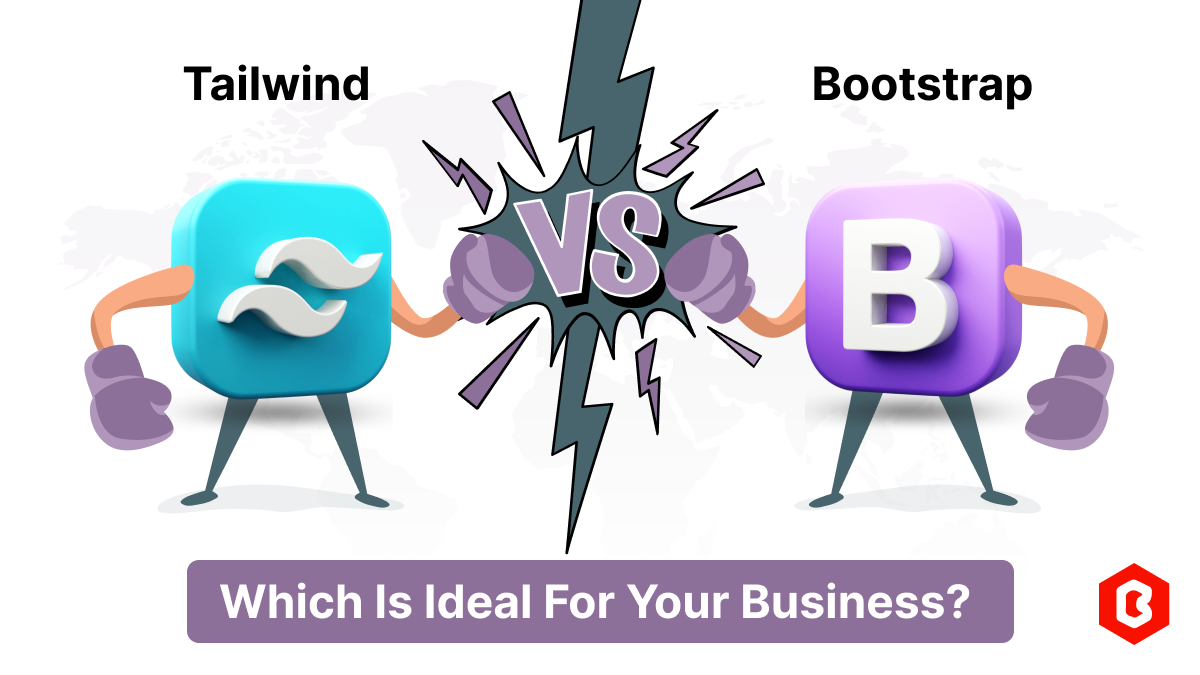New Year Special! Buy any 1 product and get 1 absolutely free — this offer applies to all Website Templates, UI Kits, and Complete Scripts.
Buy Now!
In web development, choosing the right CSS framework can make a significant difference in the success of your projects. Two frameworks in recent times have gained popularity among developers. Tailwind CSS takes a utility-first approach, empowering developers with granular control over every style element. On the other hand, Bootstrap provides pre-built components for faster development, prioritizing convenience over customization. This blog will break down the key differences between both frameworks to help you make an informed decision.
Tailwind CSS is a CSS framework that focuses on utility classes, allowing users to create applications quickly and efficiently. With Tailwind, you can control layout, color, spacing, typography, shadows, and more directly in your HTML without needing to write custom CSS.
Organizations like TED, Buzzfeed, Stripe, Medium, and GitHub CoPilot use the Tailwind CSS framework.
Bootstrap is a widely used free and open-source framework used to create websites and web apps. It's designed for responsive development, meaning it works well on both desktop and mobile devices. It provides a set of templates and tools to make building websites easier. It's based on HTML, CSS, and JavaScript, so developers can use it to create websites faster without needing to write a lot of code.
Mastercard, Spotify, LinkedIn, Twitter, and Upwork use the Bootstrap framework.
Tailwind CSS focuses on a utility-first approach, where developers use small utility classes directly in HTML to style elements. This allows for a modular and customizable styling process.
Bootstrap on the other hand is a component-based framework that comes with predefined components containing pre-styled elements. It also includes utility classes for fast and easy styling.
Learning Tailwind CSS can be more challenging because of its utility-first approach, where developers use utility classes directly in HTML. This might take some time to get used to.
In contrast, Bootstrap is often seen as beginner-friendly because of its straightforward class names and component-based structure, which are easier for beginners to grasp.
Tailwind CSS enables responsive design with utility classes and responsive breakpoints.
Bootstrap offers a built-in responsive grid system, simplifying the creation of layouts that adjust to different screen sizes.
Tailwind CSS is highly flexible, making it great for projects with various design needs.
Bootstrap is great for projects with many pre-designed components and fast prototyping.
Tailwind CSS allows developers to manually create a unified visual theme using configuration files for precise customization.
On the other hand, Bootstrap offers a uniform visual theme right out of the box, with pre-designed themes and templates for added convenience.
Tailwind CSS is ideal if you want more control over your design, a lightweight and highly customizable framework, and don't mind spending extra time on styling. It's perfect for unique designs and projects where performance is crucial.
Bootstrap comes with pre-styled components and a responsive grid system. It's great for prototyping, building admin dashboards, or any project where you need to get started quickly.
Both frameworks are powerful and effective. Tailwind CSS's utility-first approach offers unmatched flexibility and customization. Bootstrap's extensive component library and grid system make it popular among developers. Are you confused between Tailwind CSS and Bootstrap? We're here to offer the perfect solution for creating appealing and functional interfaces.
Picking the perfect style for your website is a major decision, especially in the vast scope of web...
Having a responsive web template can help you succeed and keep your business ahead of the competitio...
Nowadays, every business is operating from an online website which is called a virtual shop. From eC...
In today's digital age, having a strong online presence is no longer a luxury for local business...
When the world is going online, having a responsive website that works flawlessly across all devices...
Building a professional website for your business can be expensive and time-consuming, which can&rsq...

Not sure which template or UI kit fits your project? Reach out for expert advice.